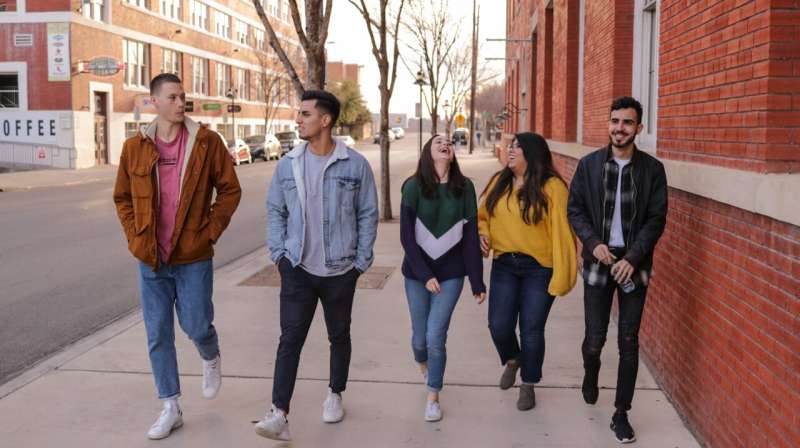This article has been reviewed according to Science X's editorial process and policies. Editors have highlighted the following attributes while ensuring the content's credibility:
fact-checked
proofread
Youth less likely to raise alarm in unsafe situations involving peers rather than adults: Study

Children and young people are more likely to tell someone if an adult rather than a peer is making them feel unsafe, new Australian Catholic University research shows.
And those aged between 10 and 18 are most likely to turn to their mom, followed by a trusted friend and then their dad to reveal situations putting them at risk of sexual abuse.
ACU's Institute of Child Protection Studies (ICPS) surveyed 3,417 young Australians aged 10 to 18 to investigate their help-seeking behaviors in organizations such as schools, out-of-home care, sport, and religious settings. The findings have been published in the journal Child Abuse Review.
After children responded to hypothetical unsafe situations involving adults and peers as part of the Children's Safety Survey, an analysis of the results, published in a special edition of Child Abuse Review, showed:
- 9% of children and young people would tell someone about an unsafe situation involving an adult.
- In unsafe situations involving a peer, 79.3% would seek help.
- Girls and older children were more likely to tell a friend.
- Children in out-of-home care and community welfare organizations were less likely to turn to a friend.
Lead author and ICPS Senior Research Officer Douglas Russell said the lower likelihood of children and young people seeking help for situations involving a peer rather than an adult was of concern.
"It's important for young people to know that peers must treat you with respect and that consent is important. When that's not happening, they need to speak up," he said. "We need to ensure that within good sexuality and relationship education, young people know it's not likely to be a stranger that's going to harm you, it's more likely to be someone you know and actually that person could be your age—not just an adult."
ICPS Director and study co-author Professor Daryl Higgins said it was good to see moms, trusted friends, and dads in the top three of the 10 most common people children would turn to when feeling threatened.
"They are important sources of advice. Parents need to make sure they are available, that they believe, and take action to ensure safety," he said.
But Mr. Russell said the results showed more work was needed to improve communication between children and young people, and the adults working in organizational settings.
"It's great children feel they can go to their parents or a friend as this supports a whole-of-community response to sexual abuse, but while organizations are doing a lot of staff training, it's not necessarily these people that kids are going to because they may feel their concerns won't be dealt with properly," he said.
Mr. Russell said ACU's Children's Safety Survey was a tool that organizations could use to examine their own child safety culture and make improvements to safeguard children.
"One of the best things we can do when it comes to implementing change to policy and practice to prevent child sexual abuse is to use contextualized and evidence-based data from within each organization itself," he said.
More information: Douglas H. Russell et al, Friends and safeguarding: Young people's views about safety and to whom they would share safety concerns, Child Abuse Review (2023). DOI: 10.1002/car.2825




















